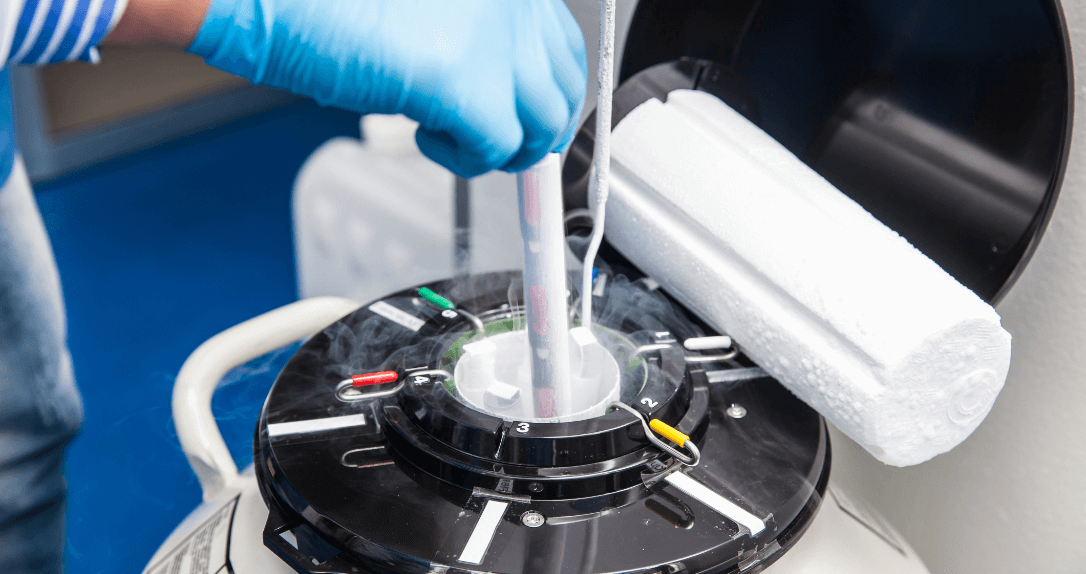
Cryopreservation is used for the process of preserving fertility by freezing eggs, sperm and/or embryos to sub-zero temperatures for later use.
Since fertility starts to decline once a woman reaches a certain age, an optimal time for a woman to consider freezing her eggs to use for a later pregnancy would be in her late 20’s and/or early 30’s. It is at that time that women will generally have a higher ovarian reserve (the number of eggs in her ovaries) and healthier quality eggs.
Cryopreservation is a relatively safe, advanced procedure and can often lead to a successful pregnancy at a later time. Research has shown that the process of freezing and thawing embryos does not harm babies and children born from frozen embryos. It is considered to be as safe as children born from “fresh” embryos.
After a woman’s eggs are retrieved during IVF, and upon fertilization, multiple healthy embryos may be created in our lab. A woman may choose to freeze extra embryos for family building at a later date.
Before an embryo can be frozen, it must go through cryopreservation which entails removing the water from the cell and replacing it with a cryoprotectant agent (CPA). This agent will protect the cells from forming ice crystals.
After the initial freezing process, embryos are stored in liquid nitrogen and will be successfully preserved for as long as required. Once treatment date has been decided, the embryos are thawed using specific agents which remove the CPAs.